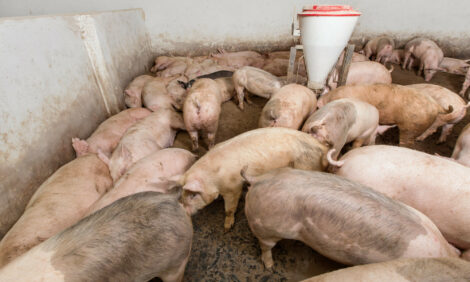



Nutrient Value of Spray Field Forages Fed to Pigs and Use of Feed Enzymes to Enhance Nutrient Digestibility
Bermuda grass, forage sorghum and sweet sorghum can partly be utilised in pig feed to provide energy, according to new research from North Carolina State University, although nitrogen digestion was low.This study at North Carolina State University determined the digestible energy (DE), metabolisable energy (ME), apparent total tract digestibility (ATTD) of nitrogen and nitrogen retention of spray field forages (Bermuda grass, forage sorghum, and sweet sorghum) fed to pigs and the effects of the supplemental feed enzymes on energy and nitrogen utilisation.
In Journal of Animal Science, Sungwoo Kim from Raleigh and co-authors there and Pontifícia Universidade Católica Do Paraná in Brazil and Murphy Brown LLC explain that a basal diet was formulated with 96 per cent corn and four per cent amino acids, minerals and vitamins.
Test diets contained 85 per cent basal diet and 15 per cent Bermuda grass, forage sorghum or sweet sorghum.
Allzyme SSF (Alltech, Nicholasville, KY) was used as a feed enzyme, which was composed of cellulase, glucanase, xylanase, phytase and protease.
The basal diet and test diets were evaluated by using four sets of 2×2 Latin square designs consisting of two pigs and two periods with a total of 32 barrows (38.7 ± 7.9kg).
Each period (10-day adjustment and four-day collection) had two Latin squares. The two treatments were levels of enzyme supplementation (0 or 200mg per kg).
Pigs received experimental diets twice daily (07:00 and 17:00h) at a fixed amount based on bodyweight of pigs (0.09×BW0.75 kg).
On day 10, chromic oxide (0.5 per cent) was added to the diets at 17:00h as an external marker.
Faecal and urine samples were collected during four consecutive days. The basal diet contained 3,850kcal DE per kg, 3,769kcal ME per kg, 86.06 per cent ATTD of nitrogen, and 71.10 per cent itrogen retention and was not affected by enzyme supplementation.
Bermuda grass contained 893kcal DE per kg, 845 kcal ME per kg, −16.50 per cent ATTD of nitrogen and −37.49 per cent nitrogen retention. These parameters tended to be improved by enzyme supplementation to 1,211kcal DE per kg (P=0.098), 1,185kcal ME per kg (P=0.081) and −10.54 per cent nitrogen retention (P=0.076).
The ATTD of nitrogen of Bermuda grass increased (P<0.05) to 0.08 per cent by enzyme supplementation.
The forage sorghum contained 1,520kcal DE per kg, 1,511kcal ME per kg, −0.72 per cent ATTD of nitrogen and −16.99 per cent nitrogen retention.
The sweet sorghum contained 1,086kcal DE per kg, 1,061kcal ME per kg, −75.47 per cent ATTD of nitrogen and −49.22 per cent nitrogen retention.
Enzyme supplementation did not improve energy digestibility of forage sorghum and sweet sorghum.
Nitrogen in these forages was poorly utilised.
Kim and co-authors concluded that spray field forages including Bermuda grass, forage sorghum and sweet sorghum can partly be utilised in pig feed to provide energy, although nitrogen is rather poorly digested.
They added that feed enzymes could enhance both energy and nitrogen utilisation in Bermuda grass but not sorghum.
Reference
Passos A.A., C. Andrade, C.E. Phillips, M.T. Coffey and S.W. Kim. 2015. Nutrient value of spray field forages fed to pigs and the use of feed enzymes to enhance nutrient digestibility. J. Anim. Sci. 93:1721-1728.
May 2015








